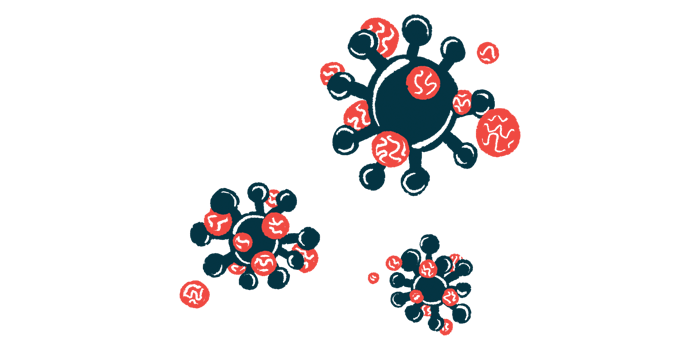JC Virus Mutations May Predict Rare Brain Infection Linked to Tysabri

Mutations in the John Cunningham virus may serve as an early predictor for a rare brain infection in multiple sclerosis patients receiving Tysabri (natalizumab), a study suggests.
However, more research is required to investigate the specific mutations in the viral VP1 gene, and validate the risk of the condition, known as progressive multifocal leukoencephalopathy (PML), in a larger group of MS patients.
The study, “Mutations in the John Cunningham virus VP1 gene could predispose to the development of progressive multifocal leukoencephalopathy in multiple sclerosis patients undergoing treatment with natalizumab,” was published in the journal Multiple Sclerosis and Related Disorders.
Tysabri is an antibody-based therapy approved to treat relapsing forms of MS. It works by preventing immune cells from accessing the brain and mistakenly attacking myelin, the fatty substance around nerve fibers essential for proper nerve cell function.
Because the therapy suppresses immune responses, more than two years of Tysabri treatment has been associated with PML, a rare and often fatal condition caused by the John Cunningham (JC) virus. Therefore, PML predictive markers would help identify at-risk patients undergoing Tysabri treatment.
While the presence of antibodies against the virus has routinely been used as a marker for PML risk, this often fails to correlate with the onset of the condition. However, mutations in the viral protein VP1 have shown predictive value for PML onset.
In the study, researchers based at the National Institute of Neurology and Neurosurgery in Mexico set out to identify the specific VP1 mutations found in MS patients undergoing Tysabri treatment. They also sought to correlate these results with the anti-JC virus antibody index.
The study included 88 people with relapsing-remitting MS, who had received 31 doses of Tysabri on average (maximum 82 doses), 97 patients with neurological diseases unrelated to MS, and 23 healthy individuals who served as controls. Also included were six people infected with HIV, with three associated with PML.
A total of 60% of MS patients were positive for anti-JC antibodies, with an average antibody index of 2.2. An index of 1.5 or less is considered low PML risk, whereas patients with an index above 1.5 are considered at high risk.
Although the anti-JC antibodies were similar between men and women, a higher level of antibodies was seen in those between the ages of 30 and 39 years (22%). The team found no differences between the time of index evolution (meaningful increases or decreases in antibody index), the number of Tysabri administrations, and previous immunosuppressive treatment.
Genetic analysis found JC virus DNA in 7% of MS patients and in the three HIV patients who also had PML. Viral DNA was absent from controls.
In all DNA-positive cases, the gene that encodes the VP1 protein was fully sequenced to find mutations. No mutations were seen in the VP1 gene in the MS patients, and none developed clinical signs of PML.
However, the VP1 sequences derived from those with HIV and PML did carry a mutation: a G (guanine) to C (cytosine) mutation at position 180, that changed the corresponding amino acid. Guanine and cytosine are two of the four building blocks of DNA, and amino acids are the building blocks of proteins.
Based on DNA sequence information, the JC viruses isolated from MS patients belonged to the 1A subtype strain, “the most prevalent in America and … more genetically stable,” the researchers wrote. In contrast, the viruses from the HIV patients were part of the 1B subtype, which is less stable and is more prevalent in Europe.
“Further research is warranted to define the association between the viral subtype and clinical outcomes in these cases,” the researchers wrote.
“Although our study did not identify cases of PML among MS patients despite the presence of JC virus, we assume that the identification of mutations in the JC virus VP1 gene could be an early predictive marker for PML allowing for more efficient patient treatment and follow-up,” the researchers wrote.
“We propose that mutations in the JC virus VP1 gene could be used as predictive marker for PML in those clinical cases with [greater than] 1.5 index,” they concluded.








